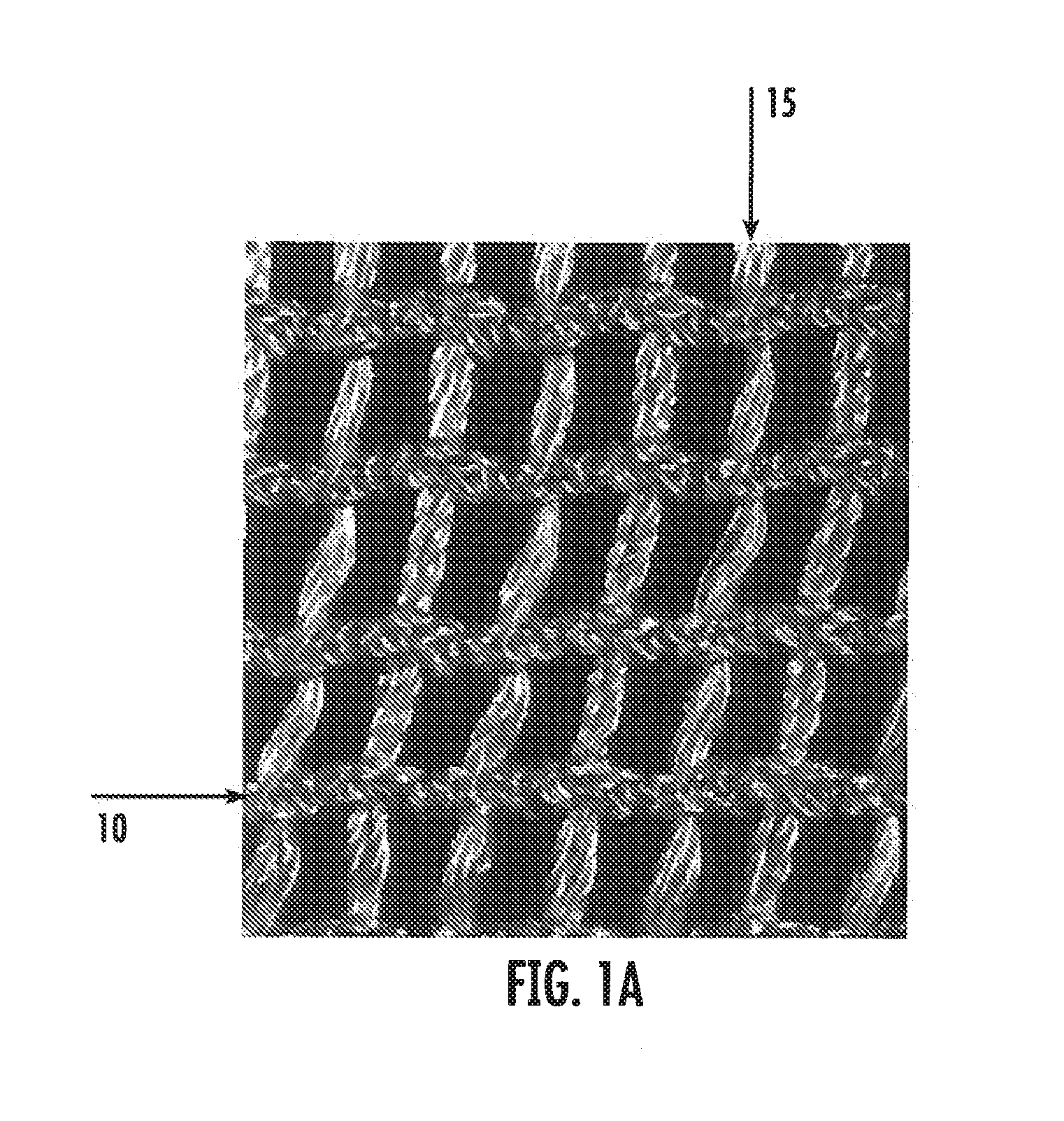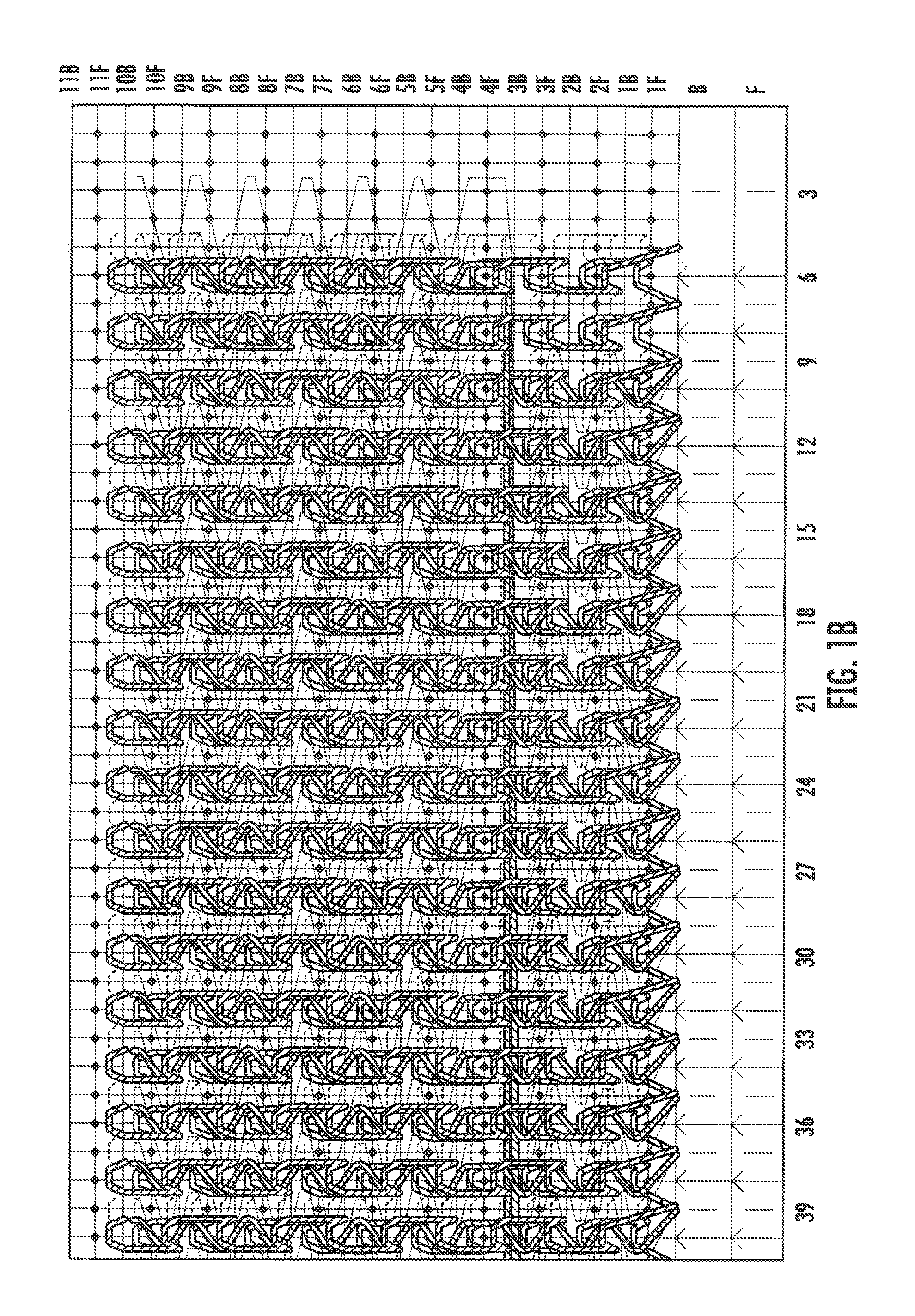Silk based implantable medical devices and methods for determining suitability for use in humans
- Summary
- Abstract
- Description
- Claims
- Application Information
AI Technical Summary
Benefits of technology
Problems solved by technology
Method used
Image
Examples
example 1
[0124]Sheep Study to Determine Suitability of the Silk Scaffold in Breast Reconstruction
[0125]A study was conducted to evaluate the performance and suitability of surgical scaffold devices within the scope of the present invention by implanting them in simulated human breast reconstruction procedures using an in vivo sub-latissimus dorsi muscle implantation model in sheep. Specifically, the study evaluated the biological response to, and explant characteristics of, a variety of scaffold configurations when employed in a clinically relevant manner and determined that the silk scaffold is well suited for use in human breast reconstruction surgery and procedures. The test system was as follows:
[0126]Test System: Animals (Sheep)
[0127]The test animals were sheep (Ovis aries) of the strain or Breed rambouillet cross or Suffolk-Hampshire cross. There were 96 test animals and 10-auxiliary animals. The animals (i.e. the sheep) were castrated males or not pregnant females. The age at of the a...
example 2
Study of Tissue Expander with Silk Scaffold in Pig
[0226]An experiment was carried out using a mini pig cadaver lab. The pig was a Yukatan Mini Pig about 18 months old and weighing about 91 kg. The scaffold used in this experiment was the Silk-Based Device No. 1, 10×25 cm, a device within the scope of the present invention (SeriScaffold™). The tissue expander used in this pig study was the NATRELLE Style 133MV 500cc, Model No. 133MV-14
[0227]The pig was euthanized for animal model and surgical procedure development. A breast reconstruction procedure was simulated and performed using a sub-latissimus dorsi tissue expander implantation. An incision was made through the skin and the adipose tissue approximately 2-3 cm ventral from the latissimus dorsi muscle. The latissimus dorsi muscle was separated and elevated from the underlying serratus ventralis and the tissue expander was inserted in the sub-muscular pocket formation. The surgical scaffold was sutured to the ventral edge of the la...
example 3
Use of the Silk Scaffold in Human Breast Reconstruction and / or Augmentation
[0229]A tissue expander can be placed adjacent to the pectoralis major muscle of a female human patient and positioned under the muscle. A test device, SMB Nos, 1, 2, 3, 4, 5, or 6, surgical scaffold (SeriScaffold™), can be sutured to the pectoralis muscle and chest wall to support the soft tissue covering the tissue expander. The tissue expander and muscle can be supported by placing sutures between the muscle and the chest wall. The procedure can be performed unilaterally or bilaterally on the right and / or left side of each female patient. The tissue expander can be filled with saline to capacity over time and a stage TI surgical procedure subsequently performed. A Stage II surgery can consist of removal of the tissue expander and placement of a breast implant. The silk scaffold can also be used is breast augmentation surgeries and procedures (where a tissue expander is typically not used) by suturing the s...
PUM
| Property | Measurement | Unit |
|---|---|---|
| Time | aaaaa | aaaaa |
Abstract
Description
Claims
Application Information
 Login to View More
Login to View More - R&D Engineer
- R&D Manager
- IP Professional
- Industry Leading Data Capabilities
- Powerful AI technology
- Patent DNA Extraction
Browse by: Latest US Patents, China's latest patents, Technical Efficacy Thesaurus, Application Domain, Technology Topic, Popular Technical Reports.
© 2024 PatSnap. All rights reserved.Legal|Privacy policy|Modern Slavery Act Transparency Statement|Sitemap|About US| Contact US: help@patsnap.com










